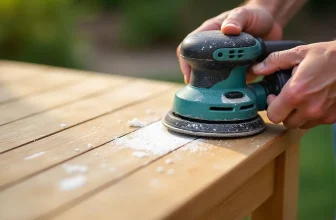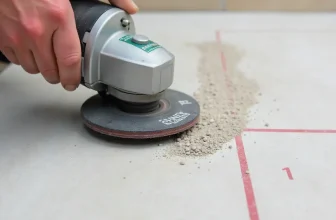
Key Takeaways
- Spray foam can be tough to remove, but it is possible with the right methods.
- Act fast — it’s much easier to clean while still wet.
- Oils, gentle scrubs, and patience beat harsh chemicals every time.
- Always protect your skin before working with foam in the future.
To get spray foam off your hands safely, act quickly. While the foam is still wet, wipe off as much as possible with paper towels, then wash with warm soapy water and apply baby oil or olive oil to dissolve residue. For dried foam, soak hands in warm water, gently rub with a pumice stone or exfoliating scrub, and moisturize afterward. Avoid harsh chemicals like paint thinner or acetone on skin.
Introduction: The Day My Hands Turned into Sticky Sculptures
You never really understand how sticky spray foam is until it’s all over your hands.
The first time I used expanding foam, I was sealing gaps around a window — feeling like a true DIY hero — until I noticed my fingers looked like they’d been dipped in melted marshmallow. Soap didn’t work. Scrubbing didn’t work. For a brief, panicked moment, I thought I’d have to live with foamy hands forever.
If that sounds familiar, don’t worry — I’ve been there. And after a few trials (and some very sticky errors), I’ve found safe, simple ways to remove spray foam without wrecking your skin.
Let’s get your hands clean again — quickly and safely.
What Makes Spray Foam So Hard to Remove?
Spray foam insulation works like magic because it sticks to everything — wood, concrete, and yes, your skin.
It’s made of polyurethane that expands and hardens as it cures, forming a strong seal that’s amazing for insulation… and terrible for cleanup.
The key thing to know:
- Wet (uncured) foam can still be wiped away.
- Dry (cured) foam becomes rock-hard plastic.
So if you just finished spraying, you’ve got a golden window of a few minutes to act before it sets.
Safety First: What NOT to Do
Before you start scrubbing like you’re in a hand-washing marathon, take a breath — some “quick fixes” can do more harm than good.
Here’s what you should avoid:
- ❌ No gasoline or paint thinner. They can burn or irritate your skin.
- ❌ No sharp tools or peeling. You’ll take skin with it.
- ❌ No excessive scrubbing. It just irritates your hands and barely removes foam.
Instead, use safe, skin-friendly methods — and a bit of patience.
How to Get Spray Foam Off Hands (Step-by-Step Methods)
Remove Fresh (Wet) Spray Foam Quickly
If you catch it early, you’re in luck — this is the easiest stage to clean up.
You’ll need:
- Paper towels or old rags
- Warm water and soap
- Baby oil, olive oil, or vegetable oil
Steps:
- Wipe away as much foam as possible using paper towels (before it dries).
- Wash your hands thoroughly with warm, soapy water.
- Apply a small amount of oil and rub it into your skin — the oil helps break down leftover residue.
- Rinse again and repeat until clean.
Pro Tip: Keep a small bottle of oil or petroleum jelly nearby when using foam — it’s a lifesaver if things get messy.
Use Acetone Carefully for Wet Foam
If the foam is still fresh, a small dab of acetone (like nail polish remover) can help — but be cautious.
- Use only on small spots and for a short time.
- Apply acetone to a cotton pad, gently wipe, and rinse immediately.
- Follow up with soap and moisturizer to prevent dryness.
If the foam has already hardened, skip this step — acetone won’t help and can irritate your skin.
Natural Oils to the Rescue
Oils are your best friend when dealing with sticky substances. They’re safe, gentle, and effective on uncured foam.
Try these options:
- Coconut oil
- Olive oil
- Baby oil
How to use:
- Warm your chosen oil slightly.
- Rub it into your hands like lotion.
- Let it sit for a few minutes to loosen the foam.
- Wipe away with a clean towel or washcloth.
Not only does this help remove residue, but it also keeps your hands soft — win-win!
Dealing with Dried (Cured) Foam on Hands
If the foam has hardened, don’t panic. It will come off — just not immediately.
Here’s what to do:
- Soak your hands in warm, soapy water for 10–15 minutes to soften the foam.
- Gently rub with a pumice stone, nail file, or exfoliating scrub.
- Rinse and repeat daily if needed — the foam will gradually flake off.
Important: Never force it. Let time and gentle exfoliation do the work.
DIY Home Remedies That Actually Work
If you prefer home solutions, here are some options that can help lift stubborn foam:
| Remedy | How to Use | Benefits |
|---|---|---|
| Baking soda paste | Mix baking soda with warm water, scrub gently | Exfoliates and lifts residue |
| Salt scrub | Combine salt and olive oil, rub in circular motions | Smooths skin and breaks down foam |
| Vinegar soak | Soak hands for 5–10 minutes, rinse, then moisturize | Mild acid helps loosen foam |
These methods are especially handy for smaller patches or sensitive skin.
Use Commercial Hand Cleaners or Wipes
If you regularly work with spray foam, consider investing in industrial hand cleaners made for mechanics or builders.
Look for products labeled:
- “Foam cleaner”
- “Contractor hand wipes”
- “Industrial hand scrub”
These cleaners often contain mild solvents that remove foam safely without stripping natural oils from your skin.
When to Let It Wear Off Naturally
If you’ve tried everything and still have stubborn spots, sometimes the best solution is to… wait.
Cured foam naturally flakes off over a few days as your skin regenerates.
To help it along:
- Apply hand lotion regularly.
- Avoid peeling or picking at it.
- Gently exfoliate once or twice a day.
Patience is key — within a week, your skin will be good as new.
Aftercare: Healing and Protecting Your Skin
Spray foam can dry out or irritate your skin, so after removal, give your hands a little TLC.
Try these soothing treatments:
- Apply aloe vera gel to calm irritation.
- Use a thick hand cream or shea butter at night.
- Wear cotton gloves after moisturizing to lock in hydration.
Your hands will thank you!
Prevention Tips for Next Time
Here’s how to avoid the sticky mess altogether:
- Always wear nitrile or disposable gloves.
- Apply barrier cream before handling foam.
- Keep a rag and oil handy in case of spills.
- Work in a well-ventilated area — your lungs and hands will appreciate it.
A little preparation saves a lot of cleanup later!
Frequently Asked Questions
Yes, dried foam eventually flakes off as your skin renews, usually within a few days.
No — those are too harsh for skin and can cause burns or irritation.
Fresh foam can cause mild irritation. Always wear gloves and wash your skin immediately if contact occurs.
Rinse with cool water, avoid chemicals, and use aloe or moisturizer. If irritation persists, see a doctor.
Summary
Getting spray foam on your hands isn’t the end of the world — even if it feels that way at first.
The trick is to act fast, use safe methods like oils and gentle scrubs, and resist the urge to peel it off.
And if you’re reading this after you’ve already made the mistake (welcome to the club!), don’t stress — with a little patience and the right care, your hands will be clean and healthy again soon.
So the next time you reach for that can of expanding foam, just remember: gloves first, panic later.





